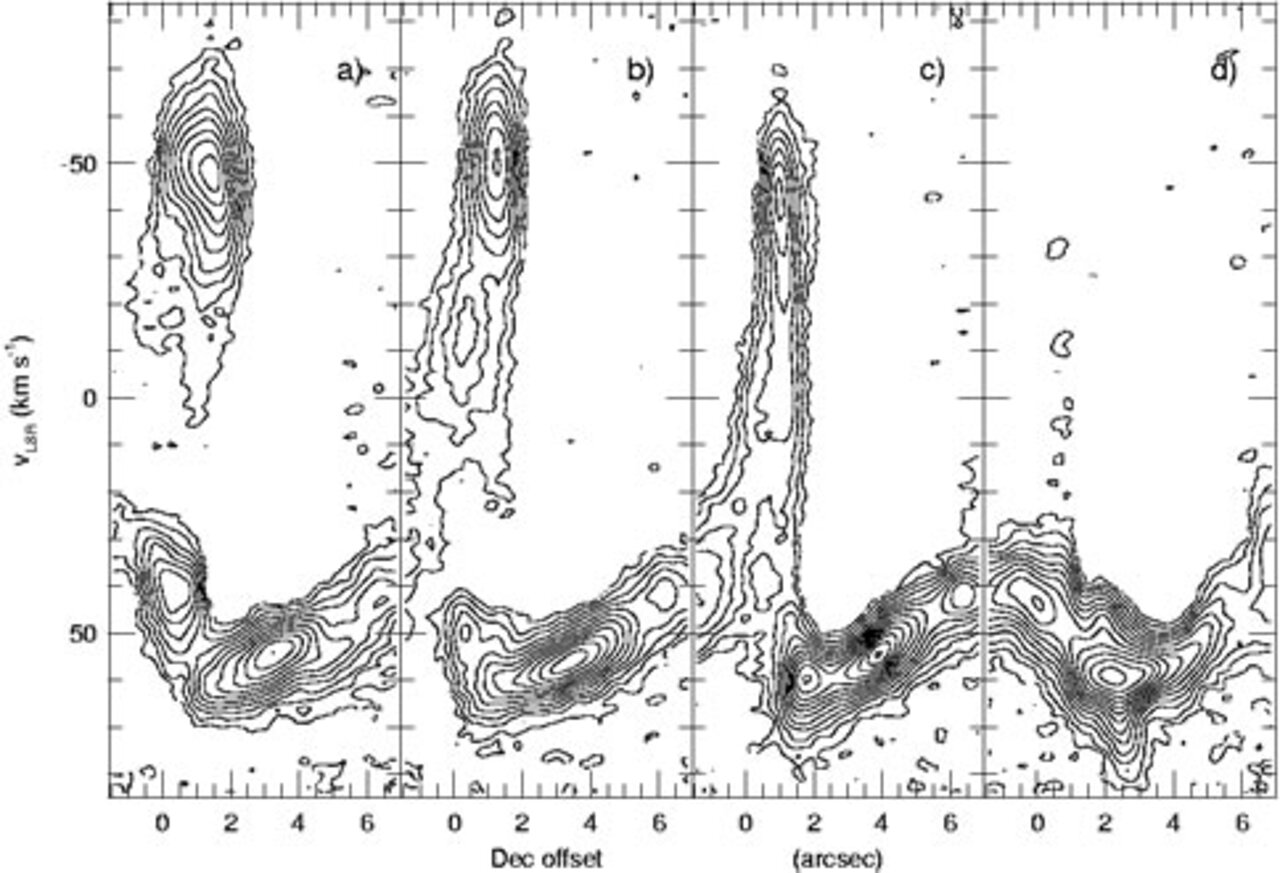Giant Interstellar Jet Stream Revealed by TEXES
March 2, 2007

Mapping Gas Jet Velocities in the Molecular Cloud W51 IRS2
A team led by John Lacy of the University of Texas at Austin recently used the instrument TEXES on Gemini North to map the star-forming region IRS2 located deep within the molecular cloud associated with the giant H II region W51. The spatial and spectral performance of TEXES on Gemini allowed the team to separate the ionized gas into several components for the first time. These include: an extended HII region on the front surface of the molecular cloud, several embedded compact HII regions, and a streamer of high velocity gas. The team interpreted the high velocity streamer to be a precessing or fan-like jet that has emerged from the molecular cloud into an OB star cluster where it is being ionized. The source of the jet is unknown. The presence of such a jet coming from within the molecular cloud is tantalizing evidence that there are as-yet-unseen young stars very highly embedded within the core of the cloud.
Using TEXES in "step-scanning" mode the team effectively turned the long-slit spectrometer into a "pseudo-IFU" which produced a data cube with 0.5 arcsec spatial and 4 km/sec spectral resolutions. The three dimensional nature of the data cube allowed the team to study both the morphology and the velocity of the ionized gas in the vicinity of W51 IRS2, via line emission from [Ne II] and [S IV].
The paper on this work by John Lacy et al, will appear in the March 20 Astrophysical Journal Letters titled: "W51 IRS2: A Massive Jet Emerging from a Molecular Cloud into an HII Region"
TEXES is a visitor instrument at Gemini North. It is offered for 2007B in a single 16-night observing block.
![Position-velocity (P-V) cuts of the [S IV] line at right ascensions](https://gemini.edu/common/media/archives/images/thumb350x/geminiann07003a.jpg)